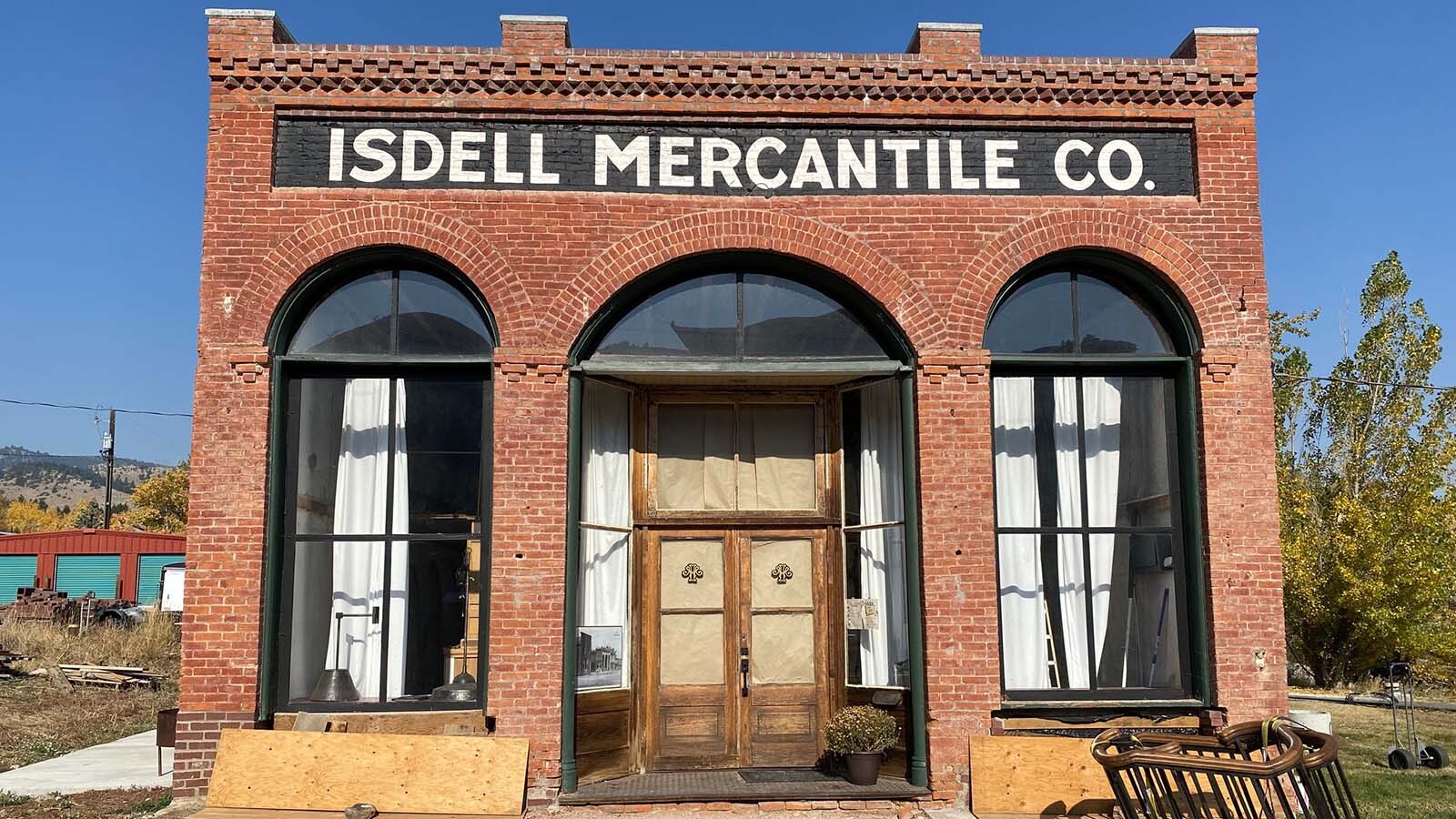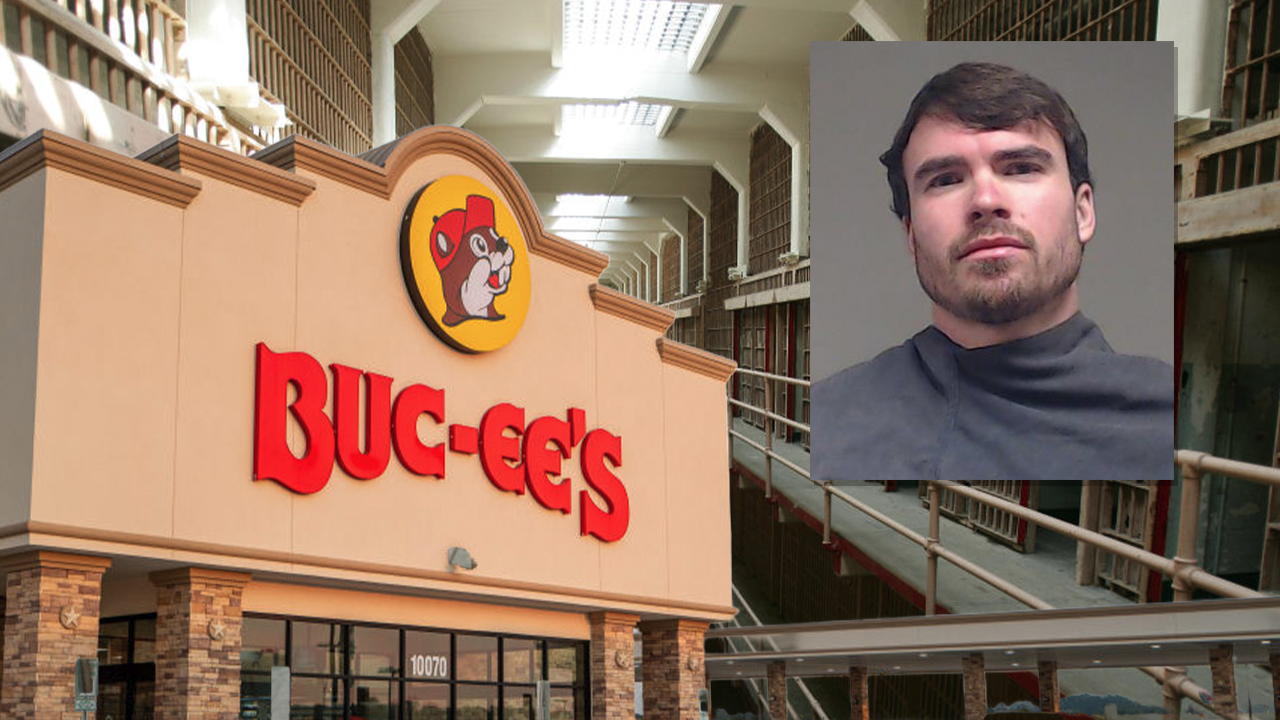Montana
Moody puts up 25, Montana downs Northwest Indian 107-59
MISSOULA, Mont. (AP) — Aanen Moody had 25 points and Montana won its season opener with a 107-59 victory over Northwest Indian on Tuesday night.
Moody was 10-of-13 shooting (3 for 5 from 3-point range) for the Grizzlies. Money Williams scored 19 points, going 4 of 9 from the floor, including 1 for 3 from 3-point range, and 10 for 10 from the line. Brandon Whitney had 15 points and finished 6 of 10 from the field.
The Eagles were led by Deontay Begay, who recorded 15 points. Northwest Indian also got seven points from Jesse Hoiby.
___
The Associated Press created this story using technology provided by Data Skrive and data from Sportradar.

Montana
A Montana town is waging war on its unhoused citizens. One shelter is fighting back

In Kalispell, in the mountains of northern Montana, unhoused people are not allowed to sleep in their cars. They can’t erect tents in public places or carry “excessive” personal possessions. They can’t sleep on bus benches, because the authorities have removed them. And they are unwelcome in the city’s parks, which no longer have public bathrooms or access to water and electricity.
Which raises the question, where exactly are unhoused people expected to sleep?
When Kalispell’s mayor, Mark Johnson, was asked this recently in a federal court hearing, his first suggestion was that they go to a homeless shelter.
The problem, though, was that Johnson and his city colleagues had just voted to close a privately run cold-weather shelter that offers beds to as many as 50 people a night – close to one-sixth of the city’s estimated unhoused population. Indeed, the hearing centered on the legality of that very decision.
“If sleep is biologically necessary,” US district judge Dana Christensen pressed him, “and homeless people can’t lawfully sleep on public property without permission or on private property without permission”, what options did that leave them?
Johnson’s response: “They will find a place within shrubbery, bushes, somewhere on public property that’s discreet where they can sleep, where they’re not seen.”
Such remarks have turned Kalispell, a city of 30,000 best known as a gateway to the grand mountain vistas of Glacier national park, into a lightning rod in the national debate on homelessness, particularly the question of how much leeway local authorities should have to police the problem as a short-term fix for a much deeper-rooted issue.
Johnson and his colleagues in city and county government have taken a strikingly punitive approach to unhoused residents in a city where house prices have more than doubled in the past five years, rents have rocketed, the cost of living has gone up sharply, and mental health services have been slashed, leading to a crisis on the streets.
They have issued one ruling after another expressly designed to restrict unhoused residents’ access to city services, many of them far-reaching. To stop people sleeping on bus stop benches, they did not just remove the benches. They got rid of every bus stop and switched to a hi-tech public transport system requiring riders to call a bus via an app linked to their credit card. Since unhoused people rarely have fully functional cellphones or credit cards, they were suddenly unable to use the bus system, too.
Politicians say they have taken these measures in response to complaints from their constituents, a number of whom have told them they don’t want to see unhoused people in their neighborhoods, sleeping in their front yards, drinking, taking drugs or defecating in public.
But the result has been that unhoused people, many of them physically or mentally disabled and battling addictions, struggle to find places to go – especially during the bitter Montana winter when they are vulnerable to frostbite and hypothermia, and a night in the open can be a death sentence.
The most desperate among them describe a life with few options outside the Flathead Warming Center, the shelter at the middle of the legal dispute and the only one in the city that imposes no restrictions (other than behavioral rules) on whom it takes in during the winter months. People keep moving from place to place, forever wary of the police and teenage gangs intent on picking fights.
“Everything is fear-driven,” said Tonya Horn, the warming center’s director, who argues that city leaders can’t simply wish the problem out of existence. “The community sees homelessness, but they’re not seeing illness. And we serve people who are ill – I can’t say that enough.”
Kalispell is hardly unique in seeking to keep unhoused people and the public disturbances that come with life on the street as far out of sight as possible. But its leaders have pushed the legal limits so far, and engaged in rhetoric so sharp, that even service providers have come to fear for their safety.
The US supreme court, in its Grants Pass decision last June, gave broad discretion to local authorities to police their public spaces and impose criminal penalties on people who sleep in the open. That discretion has been embraced by city and county governments across the political spectrum.
What makes Kalispell unusual is that the attempt to close the warming center – on the grounds that it has exacerbated the homelessness problem instead of addressing it – infringes on private property rights that even the conservative majority on the supreme court has so far left untouched.
To close a center it does not own, the city has sought to revoke the conditional use permit it granted five years ago when the center was in the planning stages. Such permits, however, typically determine how a structure is built and have no enduring power once the project is completed and approved. It is also far from clear what exactly the warming center has done wrong.
As a lawyer for the center, Christen Hebert, argued in court: “The Warming Center didn’t break the law, and it didn’t violate the conditions of its permit. But it became politically unpopular, a scapegoat for the problems associated with homelessness in Kalispell.”
Kalispell has stood out, too, because of the intensity of local officials’ rhetoric in blaming both the unhoused population and the service providers helping them.
In early 2023, Flathead county’s three commissioners wrote a notorious letter that accused those service providers of creating more homelessness. It mentioned, but did not name, a “low-barrier shelter” that had opened recently – a clear reference to the warming center.
The commissioners argued that homelessness was a problem rooted in liberal coastal cities, and its spread the result of travellers from San Francisco or Seattle seeking to export their “homeless lifestyle”. One Flathead county commissioner, Brad Abell, suggested in an interview that the root cause of homelessness was the breakdown of the American family. “And that began with Black families,” he said. “It started with the Black population of the United States.”
The warming center and its allies say such arguments are both offensive and deliberate misinformation. Worse, they believe the startlingly strong rhetoric, coming from elected officials, has given license to acts of violence against unhoused individuals.
Six months after the commissioners’ letter was published, teenagers with neo-Nazi associations were filmed beating a 60-year-old unhoused man to death in a parking lot behind a gas station. At least seven other unhoused men in Kalispell claim to have been jumped, beaten or, in one case, run over around the same time.
The hostility has continued. Many unhoused citizens report being taunted and targeted with paintball guns, firecrackers and cinder blocks thrown at their tents. Some described in interviews how they had taken to carrying knives, machetes, axes and the occasional pistol to protect themselves. They also try to stick together rather than risk being picked off one by one.
“The commissioners set the path and gave a platform for hate in this community,” Horn, the warming center director, charged.
“There’s a eugenics movement just below the surface,” added Jenny Ball, a prominent local social worker who was herself almost run down by a truck that, she believes, targeted her. “They want people to die.”
Ball called the commissioners’ letter a “dog whistle” that immediately set her and her clients on edge. “I would feel watched,” she said. “I’d be followed everywhere by people on foot or in trucks. Especially in the parks, I’d have a lot of eyes on me. People would come up angrily and ask: ‘What are you doing?’”
The county commissioners have consistently rejected any link between their letter and the ensuing violence. “I don’t believe we advocated violence against anybody,” commissioner Abell said. Johnson, the mayor, and Chad Graham, another city council member who has pushed to close the warming center, did not respond to interview requests.
At first glance, the hostility seems out of place in a city that prides itself on its neighborliness – “We take care of each other in the Flathead”, a local saying has it – and would much rather be in the business of ferrying tourists to Glacier national park or the ski slopes above Whitefish, a half-hour drive to the north.
In the last five years, though, the city has been rocked by overlapping crises that have greatly increased both the number of people living on the street and the severity of their problems. This, in turn, has hardened local attitudes toward what Horn, quoting the Gospels, calls “the least of these”.
In 2020, the Covid pandemic prompted an influx of relatively wealthy residents from California, Texas and other states who were working remotely and could stretch their money much further in north-west Montana. The population jumped more than 25% over the next four years, landlords evicted thousands of people so they could sell their properties or convert them into short-term rentals, and many of their tenants found they either could not afford a new place or even find one.
At the same time, mental care facilities started closing because of devastating budget cuts mandated by the Montana state legislature, pushing dozens of people with schizophrenia and other serious mental health conditions on to the street. Finally, property speculation led to the closure of two of Kalispell’s lower-income residential hotels, leaving several dozen of the city’s neediest with nowhere to go.
Ryan Hunter, a city council member with a background in urban planning, pushed hard to spur construction of affordable housing after he was elected in 2019 and warned his council colleagues that simply policing the new wave of unhoused citizens would not solve the problem. “The kneejerk response is always the criminalisation response,” he said. “But it doesn’t work. It just pushes the problem someplace else.”
Hunter, though, was roundly ignored, especially after a man living in a camper in a gym parking lot shot and killed an employee who told him he could no longer come in to take showers and exercise. Social media soon filled with accounts of unhoused people shooting up in parks, leaving garbage and human waste in their wake, and sleeping in tents on public trails.
At the same time, law enforcement was overwhelmed, since there was no appropriate place to take mentally ill people experiencing a crisis. People would end up bouncing among the police station, the emergency room and overnight shelters including the warming center, then be back out on the street.
Soon, the same city council members who had approved plans for the warming center in 2019 were distancing themselves from it. Another shelter in town, Samaritan House, saw a spike in crimes and other disturbances in its immediate vicinity but was not publicly accused of being responsible for it the way Horn and her colleagues were.
Kalispell’s homeless numbers were markedly down in counts conducted in 2023, shortly after the commissioners’ letter was published, and again in 2024 – a phenomenon that service providers said had less to do with the real numbers than the fact that many of the city’s unhoused people were afraid to come out of hiding to be counted because of the rancid political environment.
In his interview, Abell had a different explanation. As he sat beneath a large mule deer head erected as a hunting trophy on his office wall, he congratulated himself for putting out-of-town “homeless lifestyle” advocates on notice and effectively scaring them away. “Other states spend billions on homelessness … but homelessness has increased as they spend,” he argued. “We reduced it by 30% and didn’t spend any taxpayer money to do it.”
Homeless advocates are cautiously optimistic that a new $300m state funding stream for mental health services might one day translate into new services in and around Kalispell. But Abell and another county commissioner, Randy Brodehl, showed little sign that they were pushing for it, saying only that it was not their responsibility.
“We would rather put our resources into areas that are more effective for us, from basic law enforcement to snow plowing to road maintenance,” Brodehl said. “[Our] responsibility doesn’t include being altruistic. It doesn’t include doing things that feel good. We are here to do what’s right with the funding that the taxpayers give us. It’s not necessarily to solve people’s mental health and behavioral health issues.”
The warming center has managed to push back against this prevailing tide, in large part because its plight attracted the attention of a national group of public interest lawyers, the Institute for Justice. Weeks after the Kalispell city council voted to close the center down, IJ filed a complaint in federal court alleging that the move was illegal. Weeks after that, Christensen granted a preliminary injunction allowing the warming center to stay open while the case proceeds.
In his ruling, the judge described the city’s reasons for rescinding the center’s zoning permit as “subjective, nebulous, and … meaningless” – language seen by lawyers and the local media as devastating to the city’s legal position.
Whether the characterisation will shift public attitudes, though, is harder to say. “The community is told we are doing it wrong,” Horn lamented. “The community is told we are the problem.”
On a recent Monday night, with snow flurries in the air, two dozen men and women stood in line outside the warming center, behind a fenced enclosure so the neighbours couldn’t see them, in anticipation of the 6pm opening time. Staff was on hand to have them sign an occupancy agreement and place any pocket knives in a plastic bucket. (Firearms are forbidden.)
Inside, a meal awaited them – bean-and-ham soup, a choice of beef stew or sandwiches, potato chips and cake – as well as access to showers, toilets, laundry machines, a refrigerator and computers. The guests, as the center refers to them, were then assigned bunk beds, each with a plastic mattress and basic linens and blankets.
The center offers a range of services, including haircuts and medical care, and works diligently with each resident on ways to rebuild their lives – anything from obtaining an identity card to applying for lower-income housing. Many of the regular residents volunteer to help with the newcomers, sign up for chores or even work shifts.
They describe the center as a welcome reprieve from the hostile environment outside. “We deserve to be treated with respect until we disrespect you,” said Will Brown, a resident in a cowboy hat who has worked in the past as a wildland firefighter.
Still, it is hardly a comfortable place. The bunk room, which once served as a car repair shop, has no windows and gets hot as it fills. People snore, or have night terrors. “We’re the last resort,” Horn said, “but by no means are we a resort.”
The center does not hesitate to throw out guests who break the rules – proof, in Horn’s mind, that it upholds basic standards of orderly behavior. But those standards have also been turned against the center whenever unhoused people who were not admitted, or did not try to be, cause trouble elsewhere in the city. One of the main charges against Horn and her staff is that they have failed to be “protective of … the neighborhood” – a charge they say unfairly suggests they should somehow be responsible for policing large parts of the city.
Even when the warming center is full, many hundreds more unhoused men and women are left looking for shelter in and around Kalispell. Some, their advocates say, sleep in abandoned buildings, or in holes they dig near railroad tracks, or under a heating vent near the Kalispell police station when they can sleep unobserved. Some break city rules by sleeping in their cars, knowing the police will move them on after a few hours at most.
All sides agree this situation is intolerable. Blaming the warming center, though, strikes Horn and others as perverse and counterproductive. “When you bring people inside to warmth and safety,” she argued, “you make the community safer. They get their basic needs met. You have to start there.”
Montana
Montana Lottery Lucky For Life, Big Sky Bonus results for Jan. 26, 2025
The Montana Lottery offers multiple draw games for those aiming to win big. Here’s a look at Jan. 26, 2025, results for each game:
Winning Lucky For Life numbers from Jan. 26 drawing
01-10-21-28-40, Lucky Ball: 11
Check Lucky For Life payouts and previous drawings here.
Winning Big Sky Bonus numbers from Jan. 26 drawing
04-07-22-30, Bonus: 01
Check Big Sky Bonus payouts and previous drawings here.
Feeling lucky? Explore the latest lottery news & results
When are the Montana Lottery drawings held?
- Powerball: 8:59 p.m. MT on Monday, Wednesday, and Saturday.
- Mega Millions: 9 p.m. MT on Tuesday and Friday.
- Lucky For Life: 8:38 p.m. MT daily.
- Lotto America: 9 p.m. MT on Monday, Wednesday and Saturday.
- Big Sky Bonus: 7:30 p.m. MT daily.
- Powerball Double Play: 8:59 p.m. MT on Monday, Wednesday, and Saturday.
- Montana Cash: 8 p.m. MT on Wednesday and Saturday.
Missed a draw? Peek at the past week’s winning numbers.
Winning lottery numbers are sponsored by Jackpocket, the official digital lottery courier of the USA TODAY Network.
Where can you buy lottery tickets?
Tickets can be purchased in person at gas stations, convenience stores and grocery stores. Some airport terminals may also sell lottery tickets.
You can also order tickets online through Jackpocket, the official digital lottery courier of the USA TODAY Network, in these U.S. states and territories: Arizona, Arkansas, Colorado, Idaho, Maine, Massachusetts, Minnesota, Montana, Nebraska, New Hampshire, New Jersey, New Mexico, New York, Ohio, Oregon, Puerto Rico, Texas, Washington, D.C., and West Virginia. The Jackpocket app allows you to pick your lottery game and numbers, place your order, see your ticket and collect your winnings all using your phone or home computer.
Jackpocket is the official digital lottery courier of the USA TODAY Network. Gannett may earn revenue for audience referrals to Jackpocket services. GAMBLING PROBLEM? CALL 1-800-GAMBLER, Call 877-8-HOPENY/text HOPENY (467369) (NY). 18+ (19+ in NE, 21+ in AZ). Physically present where Jackpocket operates. Jackpocket is not affiliated with any State Lottery. Eligibility Restrictions apply. Void where prohibited. Terms: jackpocket.com/tos.
This results page was generated automatically using information from TinBu and a template written and reviewed by a Great Falls Tribune editor. You can send feedback using this form.
Montana
Arrival Of 2 New Businesses Means There’s More Than A Bar In Tiny Pony, Montana

PONY, Montana — The old joke goes something like this: “Bozeman is great, it’s only an hour from Montana.”
Cringey to some, all-too-true to others, this hackneyed one-liner springs from an understanding among Bozeman locals that life an hour outside the city is totally different, and in some ways, more authentically “Montanan.”
Exhibit A: Pony, Montana, the postcard-perfect collection of architectural relics an hour west of Bozeman. The snowcapped Tobacco Root Mountains rise in the near distance above the ambitiously named Broadway Avenue in the heart of downtown Pony, population 137.
In 1922, mining operations ceased around Pony and for the last several decades Broadway has been home to the Pony Bar, the local senior center and not much else.
But then this past summer, locals started to notice a slightly quickened pulse on Broadway.
A craft lighting and light fixtures outlet opened, and the brown paper covering the storefront windows at the old Isdell Mercantile and kept curious onlookers wondering what was afoot inside at 209 Broadway Ave.
“We were keeping it kind of top secret in here, because I wanted to surprise, and it got really fun to do,” said the building’s owner, Dan DeFrance.
The mercantile was the heart Pony when it boomed. Now the Isdell Merc aims to be the heart of its soul as a gathering spot, open for business as an event space.
Over the holidays, The Doors cover band Mojo Risin — its members met in Pony — played to a crowd not used to having more than one music venue on Broadway. The Pony Bar remains a treasured musical outpost, where patrons are known to pull the vent cover off the heating system and play it like a washboard.
Looking ahead, said DeFrance, there’s a wedding planned for the space, which is a bit warmer than before thanks to new insulation in the ceiling. Anyone who wants to rent the space can contact DeFrance through the new website he built using the same web software DeFrance teaches as a computer science professor at Montana State University.
DeFrance said that as long as he has 48 hours notice, heating the space with the wood stove that doubles as a pizza oven shouldn’t be a problem. But it does take a full day of well-stoked fires to heat up the place.
How It Came Together
“It started gaining momentum, I’d say in the last four or five years, people started getting interested in it when we started putting in glass windows. Then we repainted the sign out front,” said DeFrance. “My brother-in-law is a stonemason, so he was able to repair the damage. Stonework and brickwork on top. Then it just started getting noticed and people started getting excited about it. They get excited, and I get more excited. It starts this cycle of excitement.”
What is the Isdell Merc, exactly? Does it have a mission statement?
“The mission statement is to write a mission statement,” DeFrance told Cowboy State Daily back on Sept. 7, the Merc’s official grand opening. “For today, it was kind of just to open up the place. Get people interested.”
Since September, DeFrance’s family and friends continue to look for ways to use all the antiques stored in the Merc’s basement, including a cheese cutter from the 1800s.
Carl Pearson, who runs IronGlass Lighting across Broadway Avenue from the Merc, crafts glass and iron light fixtures that look like they were made in the 1800s.
“We call this Old World glass. We do it in the kiln,” said Pearson.
Turns out, Pearson is an early urban pioneer in downtown Pony.
“I bought the old Chrysler Dealership (in Pony) about 10 years ago,” he said.
Like DeFrance, Pearson has seen enthusiasm for renovating Pony’s historic buildings slowly grow.
“All of us are trying to revive it,” said Pearson.
Pearson is consulting old photos and plans to adorn his newly renovated IronGlass Lighting building with a stylish western facade. He also expects to team up with the owner of the Morris State Bank building, where he said a significant renovation is well underway.
Boom Times Of Old
There was a time when the Morris State Bank and the Isdell Mercantile were big businesses in Madison County.
According to Archives West, the Isdell Mercantile Co. was created in 1869 by N. J. Isdell, and its success along with Morris State Bank led the local Madisonian newspaper to call Pony the “metropolis of the Madison Valley.”
The Isdell Mercantile provided hardware, mining supplies, and various dry goods to the community, which once had a population over 1,000 in 1900. The business remained in family hands for decades, with Eli S. Adkins (Isdell’s son-in-law) serving as president when the company finally closed its doors in the early 1940s, according to a local website that documents the region’s historic sites.
DeFrance said Adkins sold the building to DeFrance’s grandmother sometime in the 1960s.
“And then, it just got filled with junk for several decades,” said DeFrance. “My dad was a builder, he was a contractor. So if he had leftover lumber or materials, it would go in here. Motorbikes, broken dishwashers, all goes in here, for decades.”
“It was kind of creepy to me,” said DeFrance, remembering time spent as a kid in the abandoned space. “There were no lights. This was boarded up.”
Part Of A Trend?
Today, the Isdell Merc joins other restored mercantile buildings across Montana from the Polebridge Merc outside Glacier National Park to the Virgelle Merc in the heart of Missouri River country near Fort Benton.
During one recent event, DeFrance said he met someone who owns an old building in the mostly abandoned town of Maudlow, Montana, who was inspired by the renovation work done in Pony.
By restoring Pony’s Merc, DeFrance put the Isdell back on the map, while finding a place for himself in his family’s history.
“My dad grew up here,” said DeFrance of Pony. “His dad grew up here. His dad grew up here. A lot of DeFrance guys grew up here, but I did not. But I grew up nearby and I traveled here often. And I’m traveling here more than ever now.”
In an interview with Cowboy State Daily on Thursday, DeFrance reflected on Pony’s contribution to the cultural landscape of Southwest Montana. He described it as a throwback location that provides something that’s harder to find in nearby Bozeman.
“The people came to Montana and then once they’re in Bozeman, they’re like, ‘Wait, where did Montana go?’” said DeFrance. “But you hit the road for a little bit and it’s definitely still Montana in these little towns. I think Pony is definitely, to me anyway, it’s the quintessential little Montana town.”
Contact David Madison at david@cowboystatedaily.com
David Madison can be reached at david@cowboystatedaily.com.
-

 Culture1 week ago
Culture1 week agoAmerican men can’t win Olympic cross-country skiing medals — or can they?
-

 Culture1 week ago
Culture1 week agoBook Review: ‘Somewhere Toward Freedom,’ by Bennett Parten
-

 Education1 week ago
Education1 week agoReport Projecting Drop in Freshman Enrollment Delivered Incorrect Findings
-

 World1 week ago
World1 week ago‘Fields were solitary’: Migration raids send chill across rural California
-

 News1 week ago
News1 week agoWho Are the Millions of Immigrants Trump Wants to Deport?
-

 Politics1 week ago
Politics1 week agoTrump administration planning illegal immigrant arrests throughout US on ‘day one’
-

 Business1 week ago
Business1 week agoOpinion: Biden delivered a new 'Roaring '20s.' Watch Trump try to take the credit.
-

 News6 days ago
News6 days agoJudges Begin Freeing Jan. 6 Defendants After Trump’s Clemency Order


















